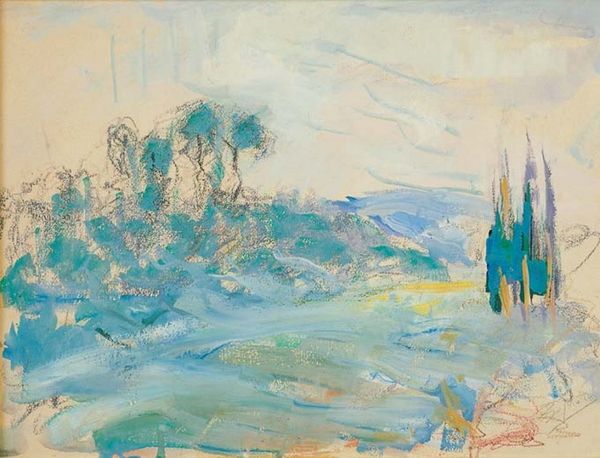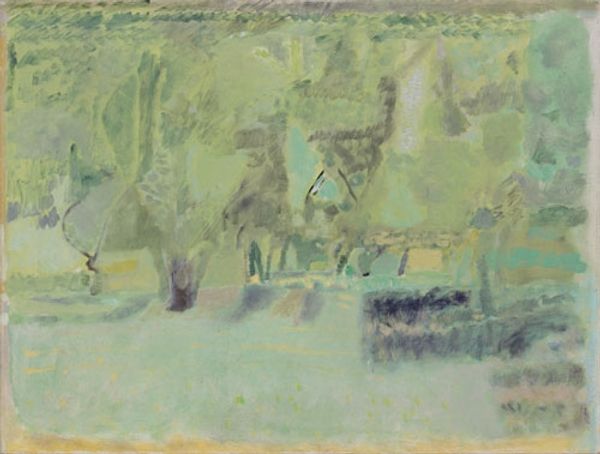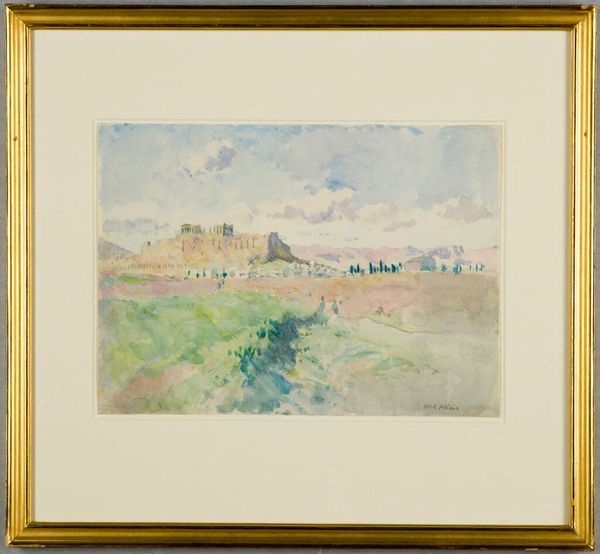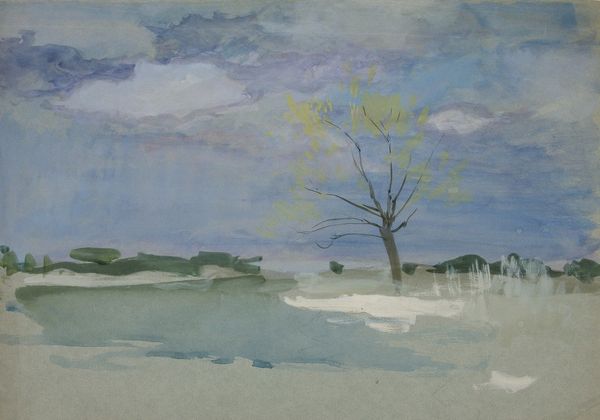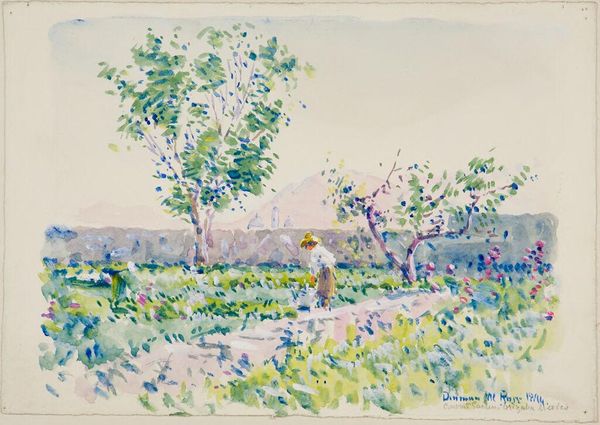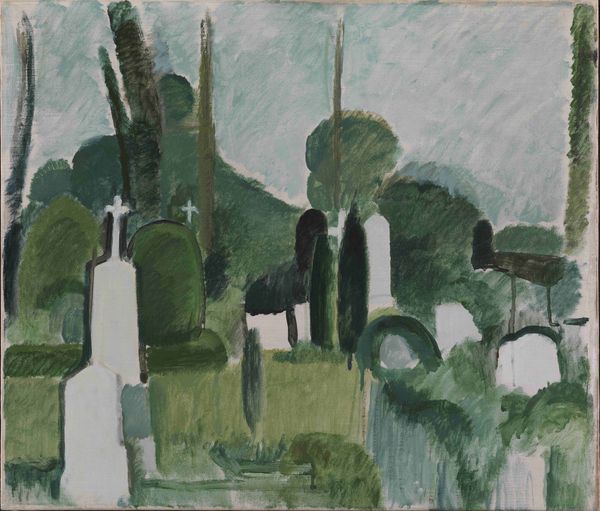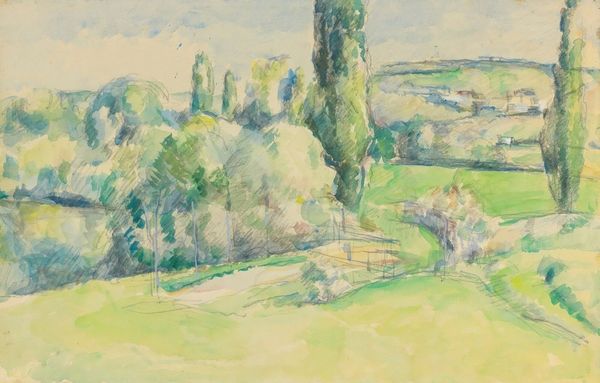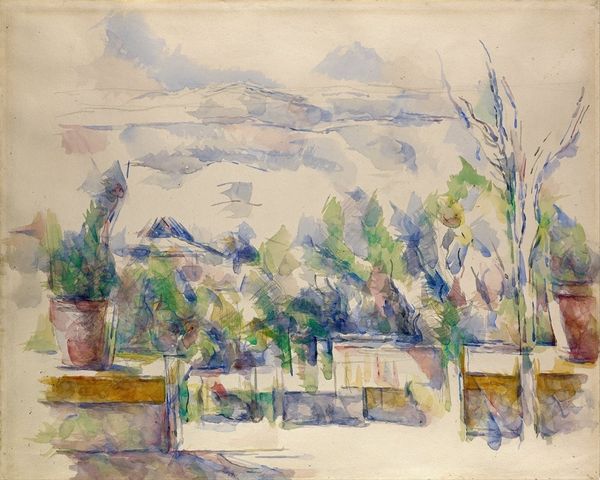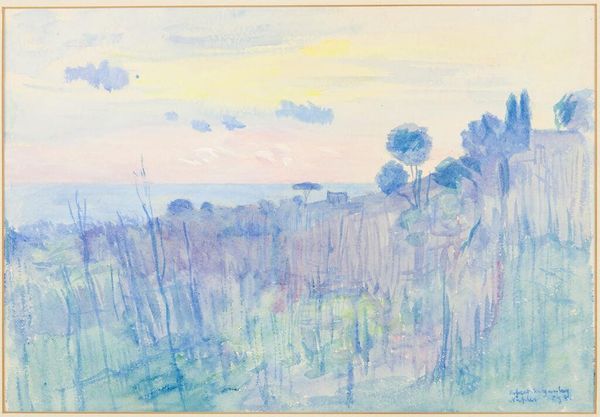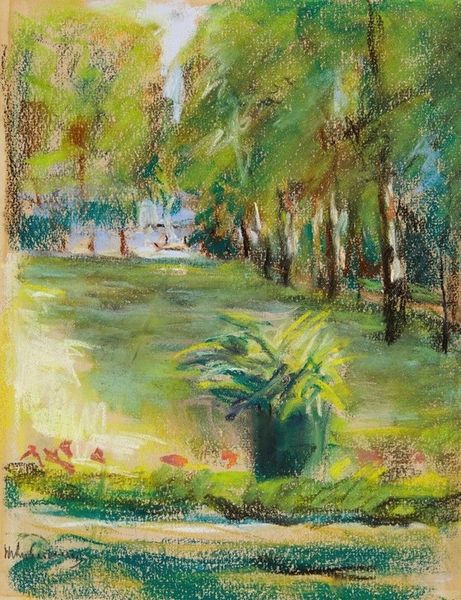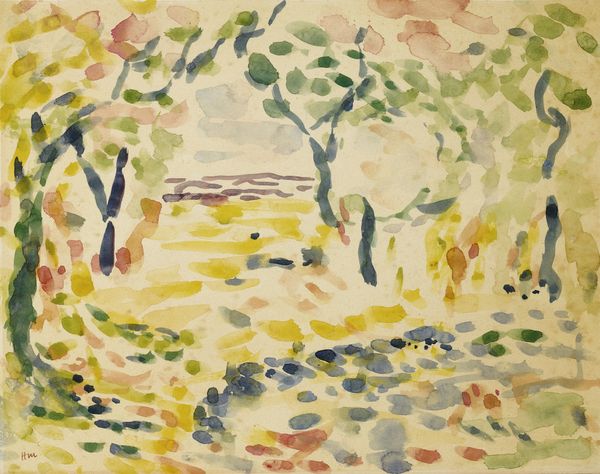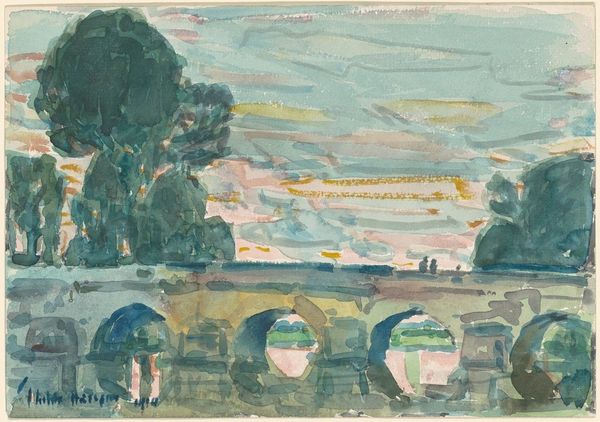
Copyright: Alexandru Ciucurencu,Fair Use
Curator: This is Alexandru Ciucurencu's "Hothouses at Mogosoaia" from 1962. The colors give it such a luminous and gentle quality. What strikes you most about it? Editor: Well, I find the… almost naivete of it appealing. I understand the painting is done in oil or watercolor, in a landscape format using the plein-air technique, which reminds me a bit of Impressionism. I wonder, though, what do you see in the repetitive rectangles throughout the lawn? Curator: Precisely. These shapes disrupt a conventional reading of landscape. Think about what “hothouses” are: spaces created to manipulate the growing cycle and control the material production of plants. This canvas isn't just a pretty vista; it highlights human intervention and the labor inherent in creating even an apparently “natural” scene. Editor: So, by depicting these structures, Ciucurencu subtly draws attention to our manipulation of the environment and, I suppose, the economic activity linked to it. How does the choice of watercolor influence that reading, or change how we perceive that human action? Curator: The ethereal quality of watercolor perhaps softens the critique, imbuing it with a sense of fleeting beauty, even as it underscores the artifice. The application of the materials, almost dreamlike, makes you question, what is real? Editor: That’s fascinating. I wouldn’t have initially thought about the materials and their application impacting my reading of labor, materiality, and consumption. Curator: Indeed. Consider how seemingly simple artistic choices reflect and shape our understanding of the world around us. Editor: Thank you. It’s helped me think about how art materials are not just a vessel for aesthetic pleasure. Curator: Precisely. And how process intersects so richly with content.
Comments
No comments
Be the first to comment and join the conversation on the ultimate creative platform.
